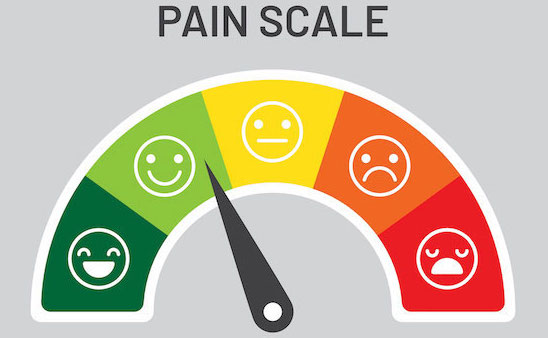••• social media research
Influenced on Instagram
Brands seek sweet spot of relevance without annoyance
 Companies have found ways to make a name for themselves on social media platforms but are users fans of their content? In a study of Canadian consumers, research firm Leger and digital performance agency Ressac found that while brands attempt to increase their platform engagement, most struggle to find the proper balance to keep users subscribed.
Companies have found ways to make a name for themselves on social media platforms but are users fans of their content? In a study of Canadian consumers, research firm Leger and digital performance agency Ressac found that while brands attempt to increase their platform engagement, most struggle to find the proper balance to keep users subscribed.
Social media has become a home for brands that target their audience via their account feed or branded content and advertisements. Thirty-seven percent of Canadians say they follow a brand or company on their personal accounts. On Instagram, 78% of people in the 16-34 age range, 54% of 35-54-year-olds and 30% of those over 55 follow brands. Forty-two percent of 16-34-year-olds, 73% of 35-54-year-olds and 75% of people 55+ follow brands on Facebook. Only 13% of users follow brands on TikTok.
While many users follow brands online, 81% say they hit the follow button after having an in-person experience with them. Eighty-seven percent of people over the age of 55 say they followed business pages after browsing their websites. Many brands or business pages struggle to gain and maintain followers. Seventy percent of 16-34-year-olds say they unfollow brands because their content is not interesting. Twenty-one percent of respondents say they unfollow because they do not want to be associated with the brand and 50% unsubscribe if their values don’t line up. Business and brand accounts are often on a slippery slope, wanting to establish a presence without being omnipresent. Fifty percent of respondents say they will unfollow an account if they post too much and 11% say they will unfollow if they don’t post enough.
Seeing advertisements on personal accounts is often disliked. Seventy-eight percent of those surveyed say they avoid ads by using an ad blocker, a private browser or another way to prevent them from popping up. Fifty-five percent of 16-34-year-olds and 32% of people 55+ say they’re willing to pay for ad-free media and streaming.
While most social media users don't enjoy advertisements, the following of influencers and content creators, who often promote brands and businesses, has continued to rise. Ten percent of people 55+, 33% of 35-54-year-olds and 59% of 16-34-year-olds follow social media influencers. Influencers can target any age group and a broad spectrum of hobbies. Twenty-four percent of the Canadian respondents follow sports personalities, 20% follow reality TV stars, 34% keep up with international artists and 24% subscribe to activists or people who advocate for causes they care about.
While some platforms have come and gone, others have had a longer run. Eighty-three percent of Canadian internet users have a Facebook account. Fifty-six percent of 16-34-year-olds, 73% of 35-55-year-olds and 70% of people over 55 use Facebook daily. Twenty-six percent of respondents over the age of 34 say if they could only keep one platform they would choose Facebook while 20% of the younger generation list Instagram as their top choice. Following Instagram, 17% of 16-34-year-olds say they enjoy Messenger and 14% prefer YouTube.
While most social media users have one personal account per platform, almost one in five Canadians say they have more than one account on various platforms. Forty-five percent say they have multiple accounts to keep certain aspects of their life private and 26% say their accounts are for different groups of people. Twenty-four percent say they have more than one account to see content without being recognized or to stay anonymous and 32% say each of their accounts has a different theme.
Leger and Ressac conducted this research with 3,000 Canadian internet users aged 16 or older. The data was collected from August 1-12, 2022.
••• shopper insights
Ethical fashion is in
The rise of sustainable shopping
 Despite the popularization of ethical fashion, fast-fashion consumption is booming among Gen Z. While it is often the more affordable clothing option, especially for younger individuals, the growing awareness of its environmental harm and unethical labor practices have increased support for more sustainable options. Research firm Momentive found that while Gen Z are gaining interest in sustainable practices, the majority have purchased clothing items from fast-fashion companies.
Despite the popularization of ethical fashion, fast-fashion consumption is booming among Gen Z. While it is often the more affordable clothing option, especially for younger individuals, the growing awareness of its environmental harm and unethical labor practices have increased support for more sustainable options. Research firm Momentive found that while Gen Z are gaining interest in sustainable practices, the majority have purchased clothing items from fast-fashion companies.
In the past year, 56% of Gen Z have purchased items from large fast-fashion brands. The most popular brands among Gen Z include H&M (33%), Shein (27%), Forever 21 (21%) and Zara (11%). Forty-one percent of Millennials, 24% of Gen X and 10% of Baby Boomers also purchase clothing from fast-fashion brands. Although the purchasing rates of fast fashion have increased, ethical fashion is also on the rise. While many question whether sustainable clothing will become just another trend, many support purchasing more ethical options.
Consumers are aware of the ethics behind their purchases and have varying opinions on which factors they prioritize. Forty-eight percent of 18-34-year-olds, 51% of 35-64-year-olds and 55% of people 65 and older believe it is very important that their clothing be made without harmful chemicals. Older individuals find it the most important for their clothing to have been made using ethical labor practices, with 50% believing it is very important, compared to 44% of 35-64-year-olds and 39% of 18-34-year-olds. Thirty-one percent of 35-64-year-olds and 33% of people 65+ say it is very important that their fashion choices are environmentally sustainable.
While the youngest generation shops fast-fashion brands the most, they ranked the lowest percentage of those who say sustainability is not important at all (8%). Thirty-five percent of those aged 18-35 say environmental sustainability is very important when purchasing shoes, clothing and accessories.
When buying clothing, 36% of 18-34-year-olds, 43% of 35-64-year-olds and 47% of people 65+ say they normally shop in person. Thirty-nine percent of 18-34-year-olds and 32% of 35-64-year-olds prefer to shop online. Over half of people aged 35+ shop at department stores and 45% of 18-34-year-olds prefer outlet stores.
For shopping inspiration, 25% of consumers rely on their friends and 21% are influenced by their family. Thirty percent of Gen Z say they rely on social media and 25% make monthly clothing and apparel purchases based on social media advertisements or influencers.
There are alternatives for shopping more sustainably. Clothing rentals are not a new concept but they have not taken off as quickly as expected. Five percent of consumers have rented clothing but have typically done it for special occasions including weddings (50%), school dances (23%), business or work events (22%) and vacations (17%) rather than for everyday use.
A more common alternative is secondhand shopping. Thirty-seven percent of men and 55% of women shop secondhand and it is the most common among the younger generations and households that make less than $50,000 per year. Ten percent of people who shop at thrift stores say they change styles frequently, 17% do it for the environmental impact, 38% say they enjoy finding one-of-a-kind pieces and 65% shop secondhand for the prices.
This survey was conducted by Momentive with 3,105 U.S. adults from December 1-6, 2022.
••• health care research
Health coverage vs. basic necessities
Is quality and affordable care out of reach?
 As prices for goods and services have increased, many Americans are putting health care on the back burner. According to research conducted by medical research nonprofit West Health and analytics firm Gallup, one in six respondents say they have cut back on needed care to afford other essentials like rent and food.
As prices for goods and services have increased, many Americans are putting health care on the back burner. According to research conducted by medical research nonprofit West Health and analytics firm Gallup, one in six respondents say they have cut back on needed care to afford other essentials like rent and food.
Seventy-three percent of individuals earning over $180,000, 78% of people in the $120,000-$180,000 range, 78% of people earning $90,000-$120,000 and 75% of those earning $48,000-$90,000 say the health care system is poor or failing. Only 5% of people making less than $24,000 and 8% of people in the $24,000-$48,000 range say the system is excellent or good.
Around four in 10 Americans say they cannot afford quality health care. As a result, within the last three months 26% have avoided seeking treatment and 13% were unable to pay for the medication they needed. One in five Americans with chronic conditions cut back on care to afford other household expenses and 20% say their health worsened due to being unable to afford treatment. Twenty-six percent of respondents who are 50-64 years old and 15% of those 65 and older say if they needed immediate quality health care they would not be able to afford it. Thirty-one percent of 50-64-year-olds show concern over affording required prescription drugs and 39% worry about paying for needed health care services in the next 12 months.
Thirty-five percent of adults fret about paying for needed health care in the future and 55% of women and 45% of men are not confident they will be able to afford health care as they age. Americans under the age of 65 fear that Medicare will no longer be available when they become eligible and 75% are anxious of the availability of Social Security.
The U.S. health care system has faced fluctuating opinions regarding health care affordability. When asked what grade they would give the health care system, nearly half of the American public surveyed say it is doing poorly or failing. An extremely low percentage of Americans believe the U.S. health care system is doing well with 9% saying it is accessible and 1% giving it an A in affordability. While few are happy with the system, the majority say it is satisfactory or doing poorly. In terms of quality, 12% grade it an A, 35% score it a B, 36% give it a C, 12% grade it a D and 5% say it fails.
The West Health-Gallup 2022 Healthcare in America Report surveyed 5,584 adults from all 50 U.S. states from June 21-30, 2022.
••• financial services research
More protection, less-tedious ID checks
Customers prioritize yet dislike fraud prevention measures
 Banking benefits are crucial factors when opening a new financial account but fraud control and security is the make-it-or-break-it feature. According to credit-scoring firm FICO, 74% of customers say fraud protection is part of the top three factors considered when opening a new account.
Banking benefits are crucial factors when opening a new financial account but fraud control and security is the make-it-or-break-it feature. According to credit-scoring firm FICO, 74% of customers say fraud protection is part of the top three factors considered when opening a new account.
Thirty-two percent of customers ranked good fraud protection as the most important attribute and 28% say it is the second most important feature when considering establishing an account at a new financial institution. Thirty-four percent say ease of use is their No. 1 consideration while 14% say it is the second-most important aspect. Five percent believe the ethical use of customer data is most important and 15% rank good value for the money as their top need. Only 6% say the most important attribute is customer service with 12% ranking it as No. 2 and 17% ranking it as No. 3.
Customer preferences have drastically shifted in other banking areas as well. Forty-nine percent say they are more likely to digitally open a new account now compared to 2021. Eighty percent say they would open a savings account digitally, 60% would open a personal bank account and 55% would open a credit card. When borrowing money for a mortgage (56%), an auto loan (52%) or a personal loan (47%) most still prefer to go to an in-person branch or conduct business by phone.
Most consumers believe going to a branch is more informative (68%) and secure (69%) while conducting banking matters on an app is easy (59%) and quick (62%). Using the web or a banking app for finances is often more convenient but many still question the security measures in place for credit or debit card payments. Forty percent strongly prefer a fingerprint scan, a face scan (36%), an iris scan (29%) or an SMS passcode (26%) as a form of authentication. Forty-two percent like a username and password option and 40% like an e-mail verification.
While most respondents agree that protection measures are important, many abandon the application process due to extensive identity checks. Forty percent say they have stopped filling out a personal bank account application, a credit card application (38%), a personal loan (37%), a pay-later loan (38%) and an insurance policy (37%) due to complex identity checks. Once customers open bank accounts, many reduce their use if they have complicated identification checks. Thirty percent of credit card users, 24% of savings account holders and 28% of people with personal bank accounts have limited their use to avoid the identity verification process.
Customers understand why these processes are in place as 70% say the measures are set to protect users from fraud, 40% believe they prevent money laundering and 65% say they protect financial institutions from fraud.
The Consumer Survey 2022 was conducted by FICO with over 14,000 customers from 14 countries.
••• financial services research
Falling behind
The struggle to reach retirement goals
 Regardless of whether individuals contribute more, less or the same amounts to their retirement accounts, the majority are fighting to stay on track. According to Bankrate, three in five Americans contributed the same amounts or more in 2022 than 2021 yet they are not progressing as expected.
Regardless of whether individuals contribute more, less or the same amounts to their retirement accounts, the majority are fighting to stay on track. According to Bankrate, three in five Americans contributed the same amounts or more in 2022 than 2021 yet they are not progressing as expected.
Thirty-five percent of Americans say they are significantly behind on their retirement savings goal, 20% feel somewhat behind, 20% are on track, 15% are ahead of their goals and 10% are unsure of where they stand.
Fifty-four percent point to inflation as the No. 1 reason they are no longer saving as much as before. Twenty-four percent say they have a reduced or stagnant income, 23% cite debt repayments and 18% blame market volatility. Thirty-six percent of Gen Z and 31% of Millennials say they have new expenses to worry about and 7% of respondents indicate that they do not want or need to save for retirement.
When comparing generations, Baby Boomers feel the most behind on their retirement savings. Seventy-one percent say they are lagging while only 7% are on track to meet their goal. Nine percent of Gen X say they are on track while 65% say they are not. The younger generations are more confident in meeting their retirement savings goal with 19% of Millennials saying they are ahead. Gen Z has the most balanced percentages with 30% saying they are behind on retirement and 31% saying they are on top of it.
Younger generations’ confidence about meeting their retirement goals may be due to increased retirement contributions. Thirty percent of Gen Z increased their retirement contribution amounts while only 10% lowered them. Thirty percent of Millennials also increased their contributions and 18% decreased them. Nineteen percent of Gen X and 22% of Baby Boomers raised their amount while 17% of Gen X and 18% of Baby Boomers reduced them.
While most individuals are adjusting their contribution amounts, highly educated Americans are raising them. Twenty percent of people with only a high school diploma contributed more last year than they did in 2021, while 15% contributed less. Thirteen percent of individuals with a four-year degree lowered and 33% boosted their amounts. Out of those with postgraduate degrees, 36% increased and 14% decreased their contributions. Having a more advanced education level is often correlated to being more financially secure however individuals who are considered high earners are not contributing enough to meet their goals.
Forty-six percent of individuals earning $100,000 or more per year say they are not on track while only 23% say they are. Out of those in the $80,000-$90,000 range, only 17% feel good where they stand while 54% say they are not doing as well as they should. Out of those earning $80,000 or less, 59% say they are lagging and 13% say they are doing better than expected.
This survey was conducted by YouGov on behalf of Bankrate with 2,312 U.S. adults from September 21-23, 2022.